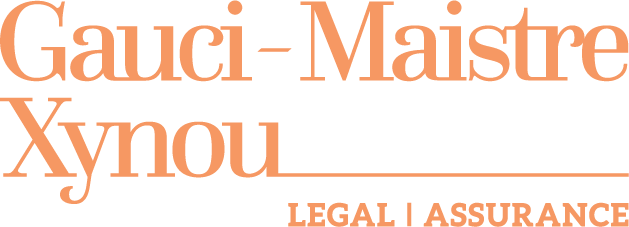Retirement Schemes
The Retirement Pensions Act 2011, Chapter 514 of the Laws of Malta (the “Act”), sets out inter alia the regulatory framework for the establishment of Pillar Two and Pillar Three Retirement Schemes and Funds.
RETIREMENT SCHEMES
The Retirement Pensions Act distinguishes between two different kinds of schemes, i.e. Occupational and Personal Retirement Schemes, both established for the principal purpose of providing Retirement Benefits.
An Occupational Retirement Scheme is a scheme or arrangement established by an employer or a number of employers or an association representing employers, jointly or separately, for the benefit of the employees and under which payments are made to members and beneficiaries for the principal purpose of providing retirement benefits. It is established with the purpose of collecting the contributions made by an employer, or by an employer and employees, or by employees through an employment relationship and investing these contributions in assets earmarked to provide retirement benefits to members and beneficiaries thereof.
A Personal Retirement Scheme on the other hand, is established with the purpose of providing retirement benefits to an individual or a number of unrelated individuals. Access to these schemes is not offered through the employment of the individuals concerned.
Retirement Benefits refer to benefits payable with reference to retirement, or on having reached a particular age, and may involve supplementary benefits paid on disability, death or other circumstances.
Both types of Retirement Schemes may be established either as a Defined Benefit Scheme (whereby employee benefits are sorted out based on a formula using factors such as salary history and duration of employment) or as a Defined Contribution Scheme (where the employees’ contributions and the employer’s contributions are both invested and the proceeds used to buy a pension and/or other benefits at retirement. The value of the ultimate benefits payable from the scheme depends on the amount of contributions paid, the investment return achieved less any fees and charges, and the cost of buying the benefits).
Furthermore, an Occupational Retirement Scheme may be established either as a Closed Scheme (established at the initiative of a single employer or a group of related employers or an association representing employers and membership of the scheme is limited thereto) or as an Open Scheme (established as a a Retirement Scheme, whose membership is open to a number of unrelated employers and self-employed persons).
Retirement Schemes require a licence to carry on any activity for the provision of retirement benefits. The commencement of payment of retirement benefits to a member of a scheme may not be made on a date earlier than that on which the member has attained the age of 50, or not later than that on which the member has attained the age of 75.
The scheme may proceed to the investment of its contributions either directly or indirectly in the market (whereby indirect investment is achieved through a retirement fund or another collective investment scheme). Several investment restrictions are applicable.
An Occupational Retirement Scheme which qualifies as an Institution for Occupational Retirement Provision may exercise its passporting rights under the ‘Occupational Pensions Directive’ (Directive 2003/41/EC of the European Parliament and of the Council of 3 June 2003 on the activities and supervision of institutions for occupational retirement schemes) as transposed into national legislation by S.L. 514.05 ‘Retirement Pensions (European Passport Rights for institutions for occupational retirement provision) Regulations’. Consequently, such a Scheme may receive contributions from employers (or ‘sponsoring undertakings’ as defined in the Directive) located in other EU/EEA countries and provide benefits to employees of the contributing employers.
Retirement Benefits for a Defined Contribution Retirement Scheme (Occupational or Personal)
Retirement Benefits shall be paid in the following forms:
- Initial cash lump sum (optional: on the retirement date, a Member may elect to take up to 30% of his assets in the Scheme as a cash lamp sum); or
- Programmed withdrawals and/or life annuity (mandatory); or
- Additional cash lamp sum (optional: where the remaining assets are deemed more than adequate to generate sufficient income throughout the member’s lifetime, then 50% of the excess value of these assets may be withdrawn as an additional cash lump sum. Please note that this lump sum may be opted for after 3 years from commencement of that member’s retirement benefits, and every year thereafter).
The main characteristics of the schemes are summarised below:
| Occupational Retirement Schemes | Personal Retirement Schemes | |
| Legal Form | SICAV, trust, contract or any other legal form as may be approved by the MFSA | SICAV, trust, contract or any other legal form as may be approved by the MFSA |
| Nature | Either Defined Benefit or Defined Contribution Scheme (Closed or Open) | Either Defined Benefit or Defined Contribution Scheme |
| Retirement Scheme Administrator | Required | Required |
| Auditor | Required | Required |
| Actuary | Required only in the case of a Defined Benefit Retirement Scheme | Required only in the case of a Defined Benefit Retirement Scheme |
| Investment Manager | Optional | Optional |
| Custodian | Optional | Optional |
| Investment Advisor | Optional | Optional |
| Back-Office
Administrator |
Optional | Optional |
| Introducer | N/A | Optional |
| Investment Management Function | Required (separation from custody function is mandatory) | Required (separation from custody function is mandatory) |
| Custody Function | Required (separation from investment management function is mandatory) | Required (separation from investment management function is mandatory) |
| Investment Restrictions | Yes | Yes |



